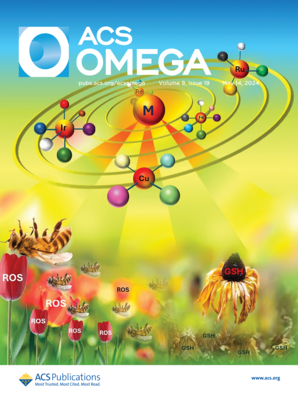安纳托利亚水牛瘤胃源性细菌耐热木聚糖酶的发现和计算机表征:基于序列的宏基因组方法
摘要
本研究对3只安纳托利亚水牛瘤胃宏基因组进行了鸟枪法测序,探索了微生物菌群与木聚糖酶的关系,并对耐热木聚糖酶进行了计算机分析,重点研究了它们的序列、结构和动态特性。为此,我们对3只安纳托利亚水牛的瘤胃宏基因组进行了测序和生物信息学分析,以确定微生物多样性和全长木聚糖酶。分别使用Blastp、ProtParam、MEGA11和Clustal Omega软件进行BLAST分析、生物物理化学特性分析、系统发育树分析和多序列比对。通过SWISS-MODEL构建3种木聚糖酶(AWBRMetXyn5、AWBRMetXyn10和AWBRMetXyn19)的三维同源性模型,并通过ProSA、ProCheck和Verify3D进行验证。利用PyMOL、BANΔIT、热稳定性预测器、What If和蛋白相互作用计算器(Protein Interaction Calculator, PIC)软件对其三维模型进行结构分析。通过对接和MD模拟研究了蛋白质与配体的相互作用。鸟枪序列和Blastp分析显示,3个瘤胃样品中,Clostridium (Clostridiales细菌目)、Ruminococcus (Oscillospiraceae细菌科)、Prevotella (Bacteroidales细菌目)和Butyrivibrio (Lachnospiraceae细菌科)是优势的潜在木聚糖酶产生菌属。此外,生物物理化学分析表明,3种木聚糖酶的脂肪族指数在80以上,不稳定性指数在40以下,熔化温度(Tm)超过65℃。系统发育分析将GH10家族中的三种木聚糖酶与嗜热木聚糖酶聚类,而同源性建模则将最佳模板确定为来自嗜热细菌的木聚糖酶。结构分析表明,3种木聚糖酶的盐桥数、疏水相互作用和Tm值分别大于50、165和70°C;而参考的嗜热性XynAS9分别为43、145和54.41°C。BANΔIT分析显示,三种木聚糖酶在n端β3-α1环/短螺旋上的B′因子值低于参考的嗜热性XynAS9。相比之下,6个残基(G79、M123、D150、T199、A329和G377)在AWBRMetXyn5及其在AWBRMetXyn10和AWBRMetXyn19中的排列位置上的B′-因子值相对于XynAS9更高,分别为Gln、Glu、Ile、Lys、Ser和Val。MD模拟结果表明,三种木聚糖酶的RMSF图中含有催化亲核试剂谷氨酸的β9-η - 5环比XynAS9的排列区域波动更大。MD模拟的距离分析表明,在整个模拟过程中,与XynAS9和AWBRMetXyn19相比,AWBRMetXyn5和AWBRMetXyn10的亲核残基与配体的距离更近。AWBRMetXyn5与AWBRMetXyn10最显著的差异是在η3短螺旋和η3-α3环两个特定区域的氨基酸波动增加,尽管序列差异很小,仅为1.24%,其中包括AWBRMetXyn5的3个关键氨基酸变异(N345、N396和T397);D345, K396和A397在AWBRMetXyn10)。因此,该研究提供了对木聚糖酶功能和热稳定性的计算见解,可以为未来的蛋白质工程工作提供信息。此外,三种木聚糖酶,特别是AWBRMetXyn5,是各种高温工业应用的有希望的候选者。在即将进行的研究中,将对三种木聚糖酶进行实验表征,并考虑其潜在的工业应用。此外,AWBRMetXyn5的热稳定性改善将以氨基酸取代(G79Q、M123E、D150I、T199K、A329S和G377V)和β3-α1环残基为目标。氨基酸(N345, N396和T397)和β9-η5环,η3短螺旋和η3-α3环上的残基也将重点放在催化效率的开发上。This study involved shotgun sequencing of rumen metagenomes from three Anatolian water buffalos, an exploration of the relationship between microbial flora and xylanases, and in silico analyses of thermostable xylanases, focusing on their sequence, structure, and dynamic properties. For this purpose, the rumen metagenome of three Anatolian water buffalos was sequenced and bioinformatically analyzed to determine microbial diversity and full-length xylanases. Analyses of BLAST, biophysicochemical characteristics, phylogenetic tree, and multiple sequence alignment were performed with Blastp, ProtParam, MEGA11 software, and Clustal Omega, respectively. Three-dimensional homology models of three xylanases (AWBRMetXyn5, AWBRMetXyn10, and AWBRMetXyn19) were constructed by SWISS-MODEL and validated by ProSA, ProCheck, and Verify3D. Also, their 3D models were structurally analyzed by PyMOL, BANΔIT, thermostability predictor, What If, and Protein Interaction Calculator (PIC) software. Protein–ligand interactions were examined by docking and MD simulation. Shotgun sequence and Blastp analyses showed that Clostridium (Clostridiales bacterial order), Ruminococcus (Oscillospiraceae bacterial family), Prevotella (Bacteroidales bacterial order), and Butyrivibrio (Lachnospiraceae bacterial family) were found as dominant potential xylanase-producer genera in three rumen samples. Furthermore, the biophysicochemical analysis indicated that three xylanases exhibited an aliphatic index above 80, an instability index below 40, and melting temperatures (Tm) surpassing 65 °C. Phylogenetic analysis placed three xylanases within the GH10 family, clustering them with thermophilic xylanases, while homology modeling identified the optimal template as a xylanase from a thermophilic bacterium. The structural analysis indicated that three xylanases possessed the number of salt bridges, hydrophobic interactions, and Tm score higher than 50, 165, and 70 °C, respectively; however, the reference thermophilic XynAS9 had 43, 145, and 54.41 °C, respectively. BANΔIT analysis revealed that three xylanases exhibited lower B′-factor values in the β3-α1 loop/short-helix at the N-terminal site compared to the reference thermophilic XynAS9. In contrast, six residues (G79, M123, D150, T199, A329, and G377) possessed higher B′-factor values in AWBRMetXyn5 and their aligned positions in AWBRMetXyn10 and AWBRMetXyn19, relative to XynAS9 including Gln, Glu, Ile, Lys, Ser, and Val at these positions, respectively. MD simulation results showed that the β9-η5 loop including catalytic nucleophile glutamic acid in the RMSF plot of three xylanases had a higher fluctuation than the aligned region in XynAS9. The distance analysis from the MD simulation showed that the nucleophile residue in AWBRMetXyn5 and AWBRMetXyn10 remained closer to the ligand throughout the simulation compared with XynAS9 and AWBRMetXyn19. The most notable difference between AWBRMetXyn5 and AWBRMetXyn10 was the increased amino acid fluctuations in two specific regions, the η3 short-helix and the η3-α3 loop, despite a minimal sequence difference of only 1.24%, which included three key amino acid variations (N345, N396, and T397 in AWBRMetXyn5; D345, K396, and A397 in AWBRMetXyn10). Thus, this study provided computational insights into xylanase function and thermostability, which could inform future protein engineering efforts. Additionally, three xylanases, especially AWBRMetXyn5, are promising candidates for various high-temperature industrial applications. In a forthcoming study, three xylanases will be experimentally characterized and considered for potential industrial applications. In addition, the amino acid substitutions (G79Q, M123E, D150I, T199K, A329S, and G377V) and the residues in the β3-α1 loop will be targeted for thermostability improvement of AWBRMetXyn5. The amino acids (N345, N396, and T397) and the residues on the β9-η5 loop, η3 short-helix, and η3-α3 loop will also be focused on development of the catalytic efficiency.

 求助内容:
求助内容: 应助结果提醒方式:
应助结果提醒方式:


